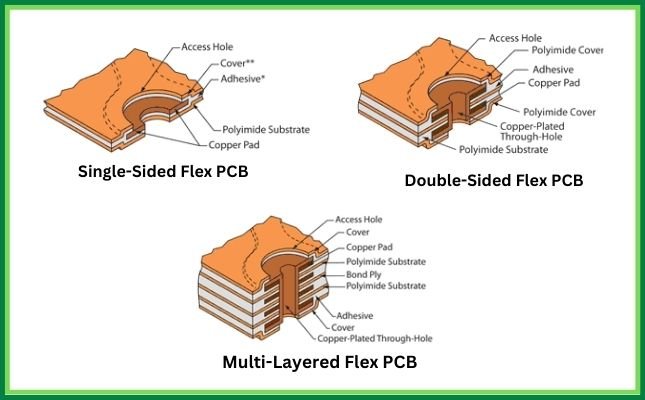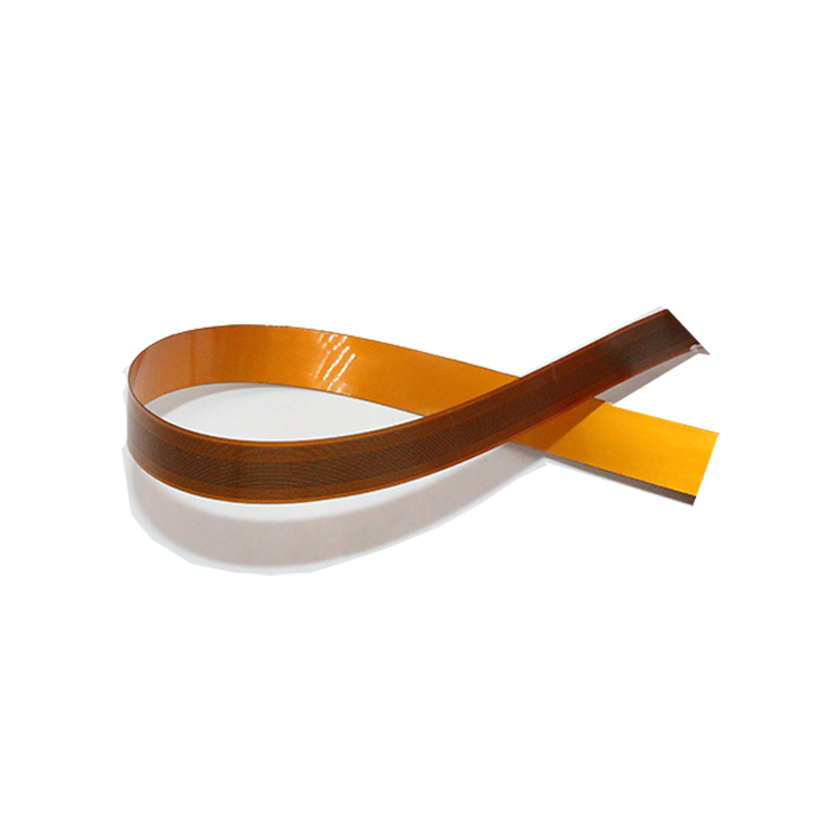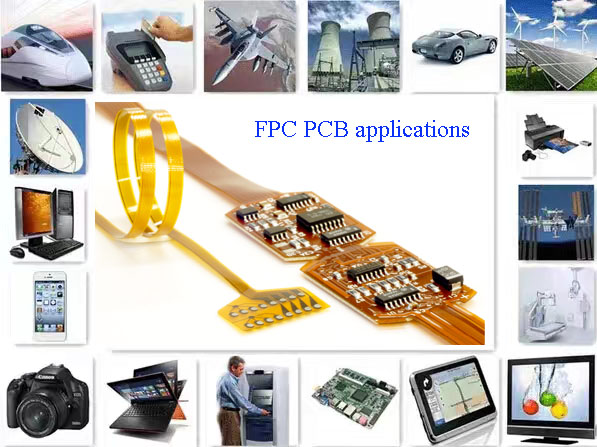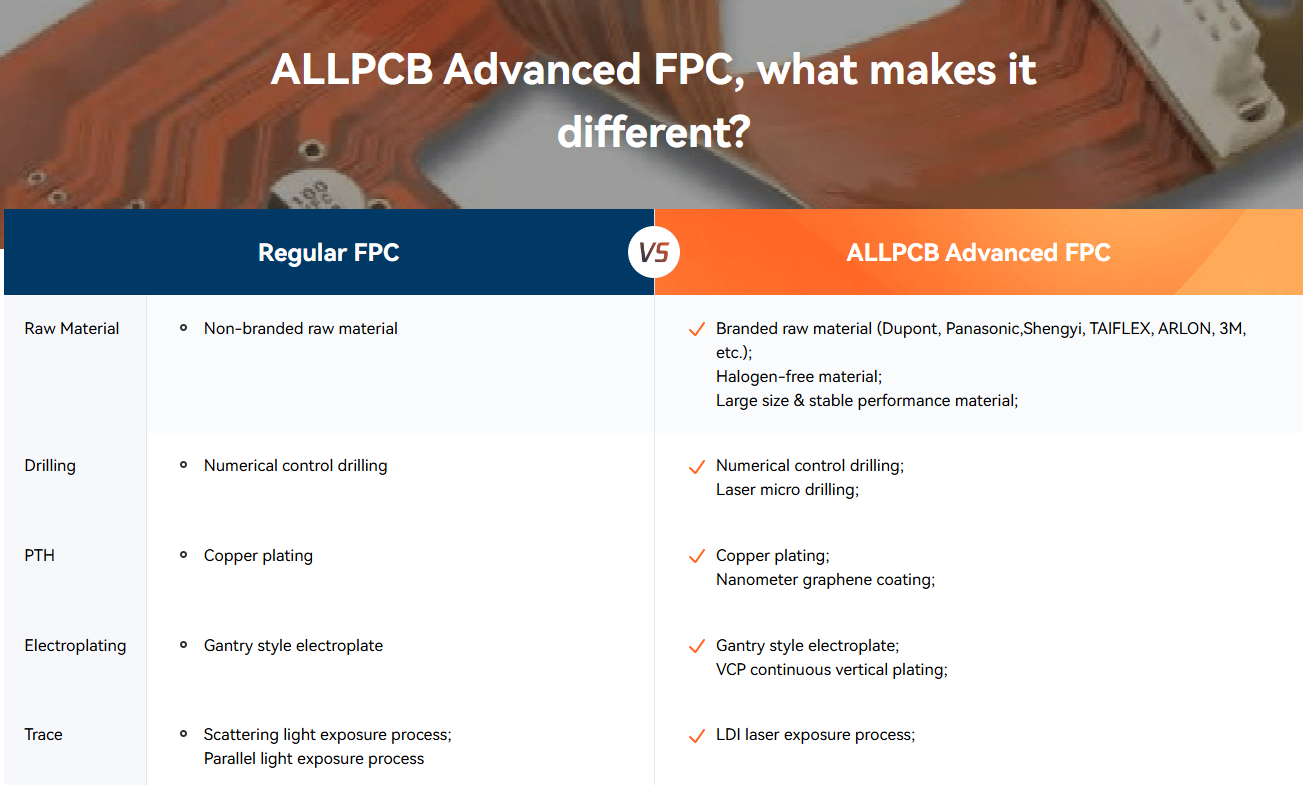Flexible printed circuit boards (PCBs) are transforming modern electronics, enabling innovative designs that rigid PCBs simply cannot achieve. Unlike traditional rigid boards, flexible PCBs can bend, twist, and conform to complex shapes, making them essential for compact, lightweight, and dynamic applications. As industries like consumer electronics, medical devices, and aerospace push for smaller, more reliable devices, flexible PCBs have become a cornerstone of cutting-edge engineering. In this blog, we dive into what flexible PCBs are, their key applications, and the advantages that make them indispensable for engineers.
Whether you're designing a wearable device or optimizing an automotive system, understanding flexible PCBs can unlock new possibilities for your projects. Let's explore their structure, benefits, and real-world uses to help you make informed design decisions.
What Are Flexible PCBs?
Flexible PCBs, also known as flex circuits or FPCs, are electronic circuits built on flexible substrates like polyimide or polyester, allowing them to bend and conform to various shapes. Unlike rigid PCBs, which use stiff materials like FR4, flexible PCBs can withstand repeated flexing and fit into tight or irregularly shaped spaces. They consist of thin conductive layers (typically copper) laminated onto a flexible dielectric substrate, with protective finishes like solder masks or coverlays to ensure durability.
Flexible PCBs come in three main types:
- Single-sided: One conductive layer, ideal for simple, cost-effective designs.
- Double-sided: Conductive layers on both sides, offering more complex routing.
- Multilayer: Multiple conductive layers for high-density, intricate circuits.
These boards can also be combined with rigid sections to form rigid-flex PCBs, blending the stability of rigid boards with the adaptability of flex circuits. The ability to bend without compromising electrical performance makes flexible PCBs a game-changer for modern electronics.

Key Advantages of Flexible PCBs
Flexible PCBs offer a range of benefits that make them a preferred choice for engineers tackling complex design challenges. Here's a closer look at their standout advantages:
1. Space and Weight Savings
Flexible PCBs significantly reduce the size and weight of electronic assemblies. Their thin substrates (often 12-125 microm thick) and ability to fold into compact spaces eliminate the need for bulky connectors and wiring harnesses. For example, in a smartwatch, a flexible PCB can wrap around components, reducing the device's footprint by up to 50% compared to rigid PCB designs. This is critical for applications like wearables, where every gram matters.
2. Enhanced Reliability
Fewer interconnections mean fewer points of failure. Flexible PCBs reduce the reliance on connectors, which are prone to wear and misalignment. This improves system reliability, with studies showing a 30% reduction in failure rates for flex-based designs in high-vibration environments like automotive systems. Their resistance to mechanical stress also ensures consistent performance under dynamic conditions.
3. Durability in Harsh Environments
Flexible PCBs are built to withstand vibrations, shocks, and temperature extremes. Polyimide substrates, for instance, can handle temperatures up to 400 degrees Celsius, making them ideal for aerospace and industrial applications. Their flexibility also allows them to absorb mechanical stress, ensuring long-term durability in devices like foldable smartphones, which may endure thousands of flex cycles.
4. Improved Signal Integrity
Flexible PCBs support controlled impedance designs, minimizing signal loss and impedance mismatches. For high-frequency applications, such as 5G devices, flex circuits can maintain signal speeds up to 10 Gbps with minimal degradation. This is achieved through precise trace geometries and dielectric materials with low loss tangents (e.g., polyimide with a dielectric constant of ~3.5).
5. Cost Efficiency in Assembly
While flexible PCBs may have higher initial manufacturing costs, they reduce assembly expenses by simplifying designs. Fewer components and manual assembly steps can cut labor costs by up to 20%. For example, in automotive wiring harnesses, flex PCBs replace complex cable systems, streamlining production and reducing errors.

Applications of Flexible PCBs
Flexible PCBs are ubiquitous across industries, enabling innovative designs where rigidity is a limitation. Below are some of the most prominent applications, with examples of how they're transforming engineering.
1. Consumer Electronics
From smartphones to fitness trackers, flexible PCBs are at the heart of compact consumer devices. In a smartwatch like the Apple Watch, flex circuits connect the display, sensors, and battery in a sleek, wrist-hugging design. Their lightweight nature (often under 10 grams for a single-sided flex PCB) and ability to bend around components make them ideal for wearables. Foldable smartphones, such as the Samsung Galaxy Z Fold, rely on multilayer flex PCBs to support dynamic displays that endure repeated folding.
2. Medical Devices
Flexible PCBs are revolutionizing medical technology, particularly in wearables and implantable devices. For instance, pacemakers use biocompatible flex circuits to conform to the body's contours, ensuring patient comfort and reliability. These circuits can withstand bodily fluids and temperature fluctuations (37-40 degrees Celsius) for years without failure. In diagnostic equipment like MRI scanners, flex PCBs enable compact, high-density interconnections, improving imaging precision.
3. Automotive Systems
The automotive industry leverages flexible PCBs for advanced driver assistance systems (ADAS) and infotainment. Flex circuits connect sensors and control units behind dashboards, reducing weight by up to 70% compared to traditional wiring harnesses. Their vibration resistance (tested to withstand 10G forces) makes them ideal for harsh automotive environments. For electric vehicles, flex PCBs optimize battery management systems, enhancing range and efficiency.
4. Aerospace and Defense
In aerospace, weight and reliability are critical. Flexible PCBs are used in avionics, such as heads-up displays (HUDs), where they drive high-resolution holographic imaging with minimal weight (e.g., under 50 grams for a helmet-mounted display). In missile systems, flex circuits endure extreme conditions, including temperatures from -55 degrees Celsius to 125 degrees Celsius and high G-forces, ensuring mission-critical performance.
5. Industrial Electronics
Flexible PCBs power robotic arms and industrial sensors, where flexibility and durability are paramount. In automated systems, flex circuits enable compact connections that withstand repeated motion (up to 10,000 flex cycles). For example, in a robotic arm, a double-sided flex PCB can route power and signals through joints, reducing maintenance needs and improving uptime by 15%.

Challenges of Flexible PCBs
While flexible PCBs offer significant advantages, they come with challenges that engineers must address:
- Complex Assembly: The flexible nature requires specialized handling during assembly to avoid damage. For instance, improper bending beyond a 1 mm radius can crack traces.
- Higher Initial Costs: Manufacturing flex PCBs is more expensive due to advanced materials and processes, with costs up to 30% higher than rigid PCBs.
- Thermal Management: Flexible substrates may limit traditional heat-sinking methods, requiring innovative cooling solutions like liquid metal conductors.
- Repair Difficulty: Reworking flex PCBs is challenging, as removing protective coverlays without damaging traces is time-consuming.
Engineers can mitigate these challenges through careful design, such as optimizing bend radii and selecting robust materials like polyimide. Collaboration with experienced manufacturers also ensures high-quality outcomes.
How ALLPCB Supports Flexible PCB Design
For engineers looking to harness the power of flexible PCBs, partnering with a reliable manufacturer is crucial. ALLPCB offers advanced manufacturing capabilities tailored to flex circuit needs, including quick-turn prototyping to accelerate your design cycle. Our global logistics ensure timely delivery, while our expertise in high-density interconnect (HDI) flex PCBs supports complex applications like 5G devices and medical wearables. With state-of-the-art equipment for laser drilling and direct imaging, we deliver precision and reliability, helping you bring innovative designs to market efficiently.

Best Practices for Designing Flexible PCBs
To maximize the benefits of flexible PCBs, engineers should follow these design guidelines:
- Optimize Bend Radius: Ensure the bend radius is at least 10 times the PCB thickness (e.g., 0.5 mm for a 50 microm thick board) to prevent trace damage.
- Select Appropriate Materials: Use polyimide for high-temperature applications or polyester for cost-sensitive designs. Liquid crystal polymer (LCP) is ideal for high-frequency signals due to its low moisture absorption.
- Minimize Layer Count: Reduce layers to lower costs and improve flexibility, but ensure sufficient routing for signal integrity. For example, a double-sided flex PCB can handle 80% of consumer electronics applications.
- Incorporate Stiffeners: Add FR4 or polyimide stiffeners under large components to reduce solder joint stress, especially in rigid-flex designs.
- Test Thoroughly: Use specialized testing like flex cycle testing (e.g., 10,000 cycles at 180 degrees) to verify durability before production.
Conclusion
Flexible PCBs are a cornerstone of modern electronics, offering unparalleled flexibility, reliability, and space savings. From enabling sleek consumer devices to powering life-saving medical implants, their applications are vast and growing. While challenges like cost and assembly complexity exist, the advantages - such as reduced weight, improved signal integrity, and durability - make them a go-to solution for engineers. By understanding their capabilities and following best practices, you can leverage flexible PCBs to create innovative, high-performance designs.
Ready to explore flexible PCBs for your next project? With their transformative potential and our manufacturing expertise, we're here to help you bring your ideas to life. Stay ahead in the fast-evolving world of electronics by embracing the flexibility of these remarkable circuits.
 ALLPCB
ALLPCB







